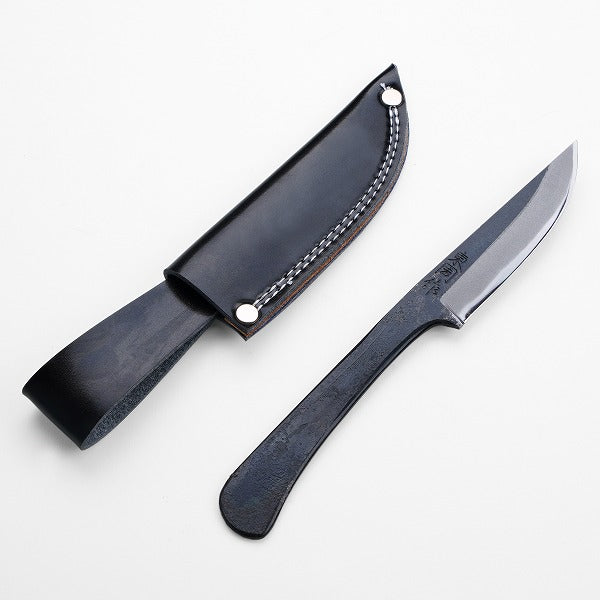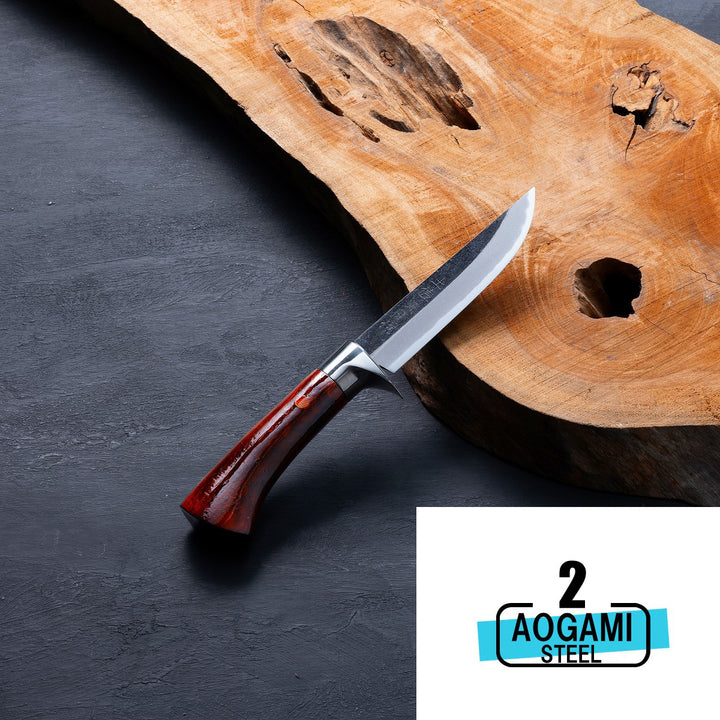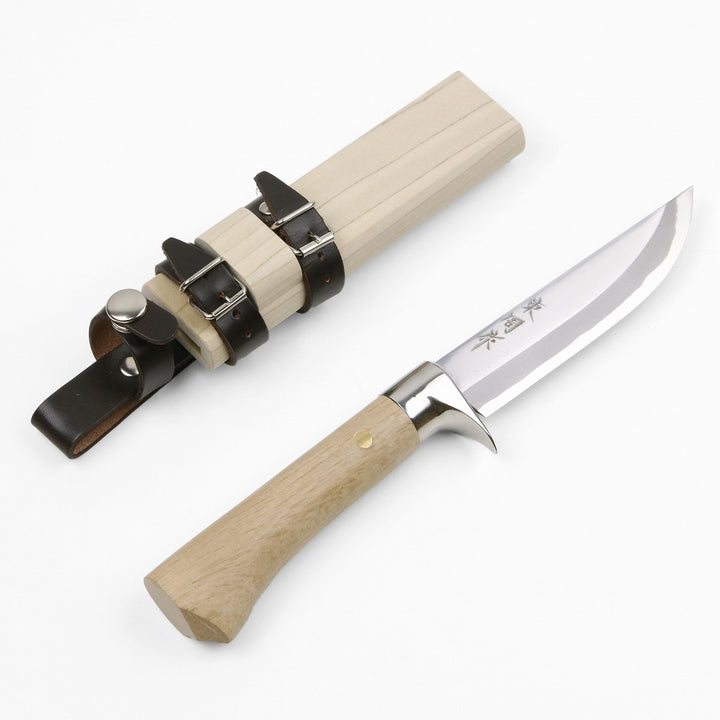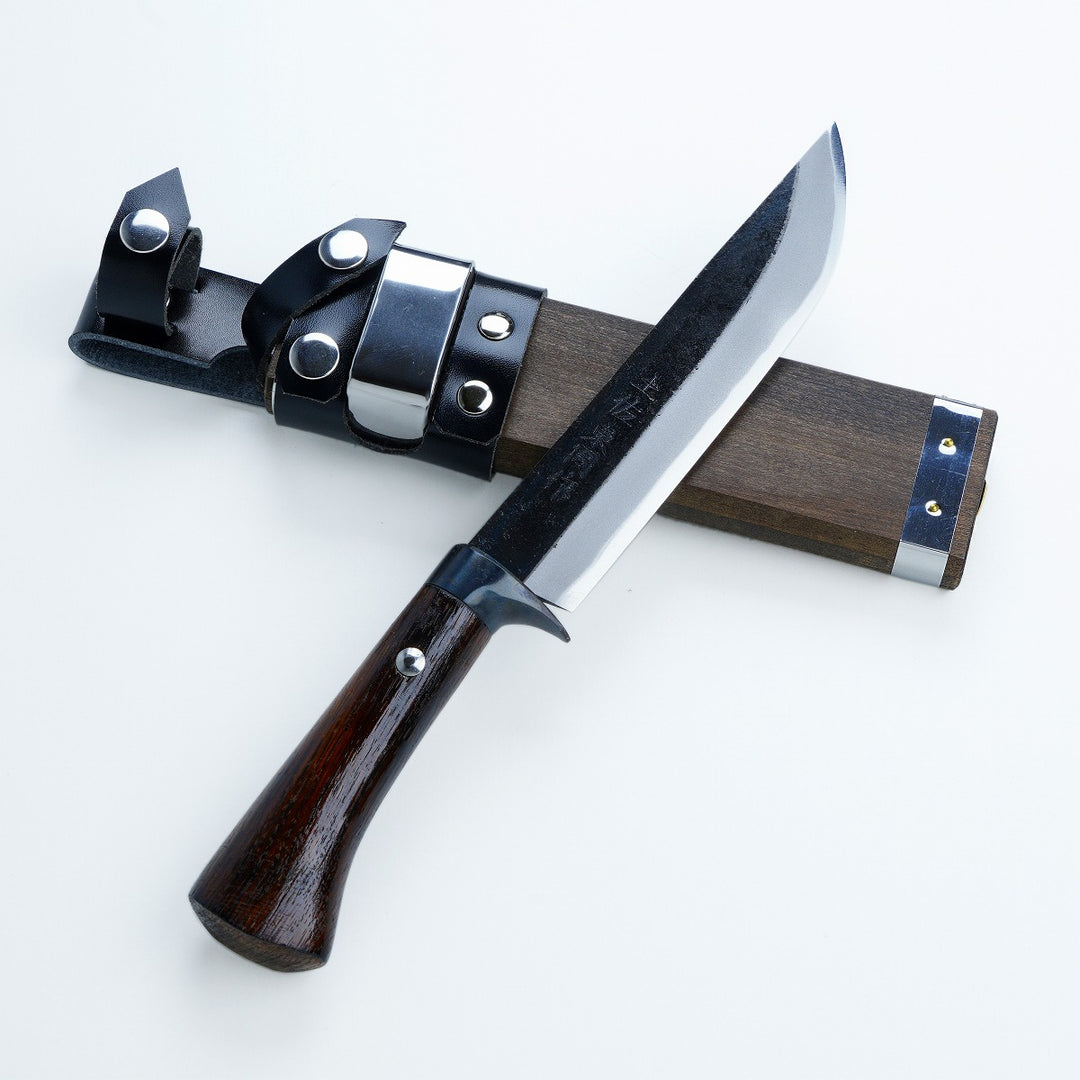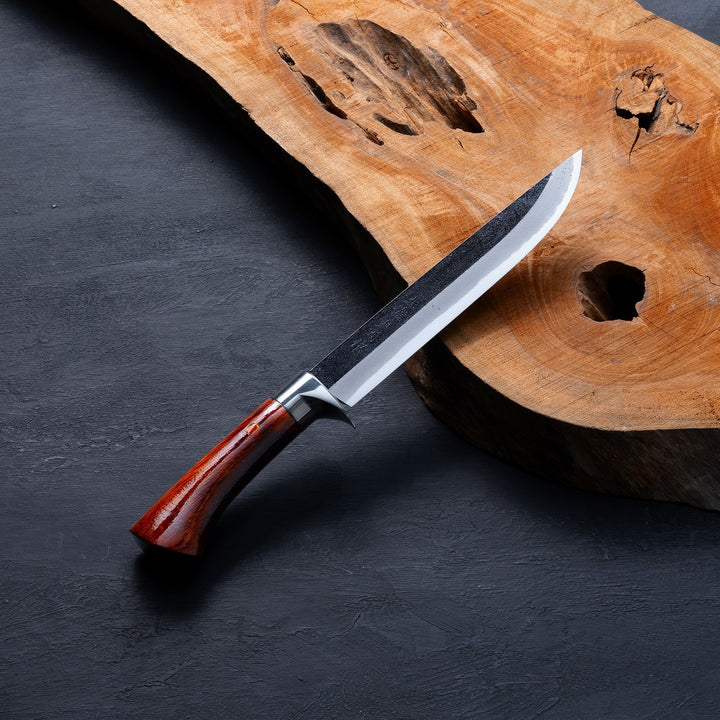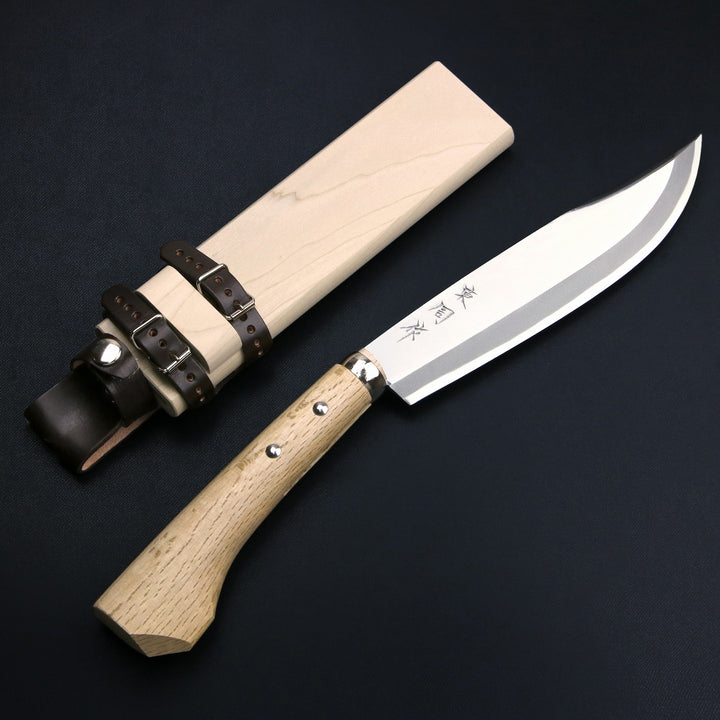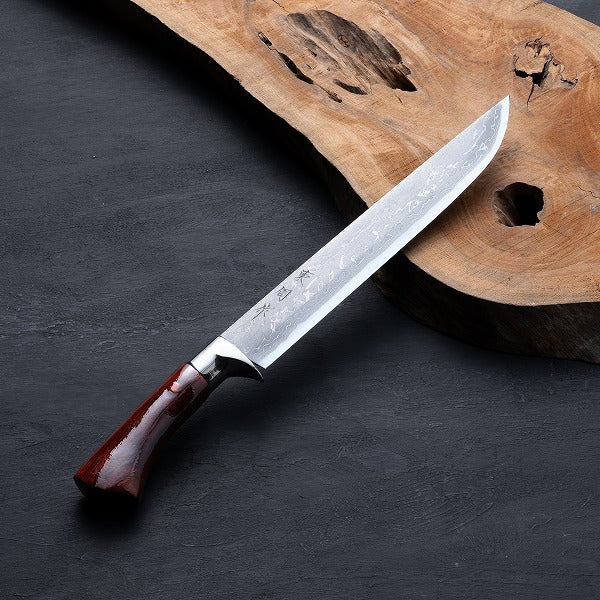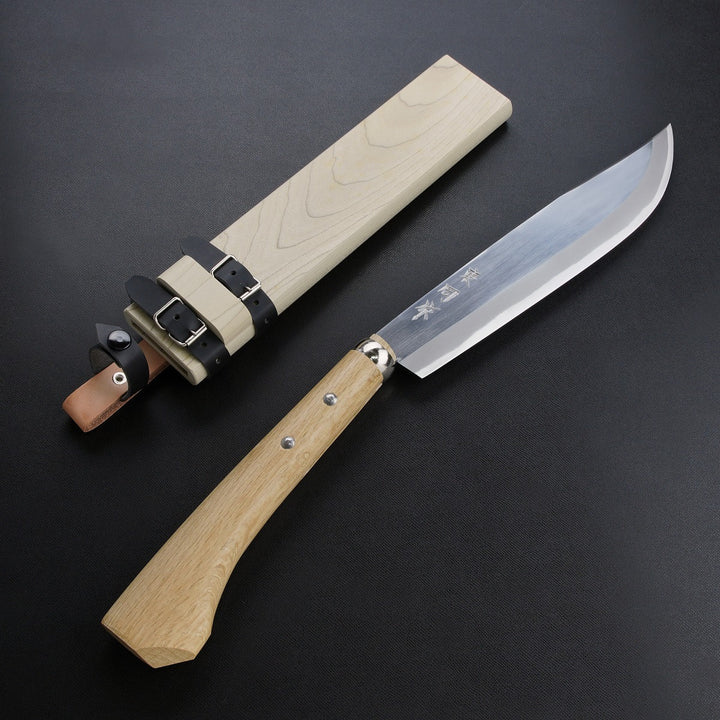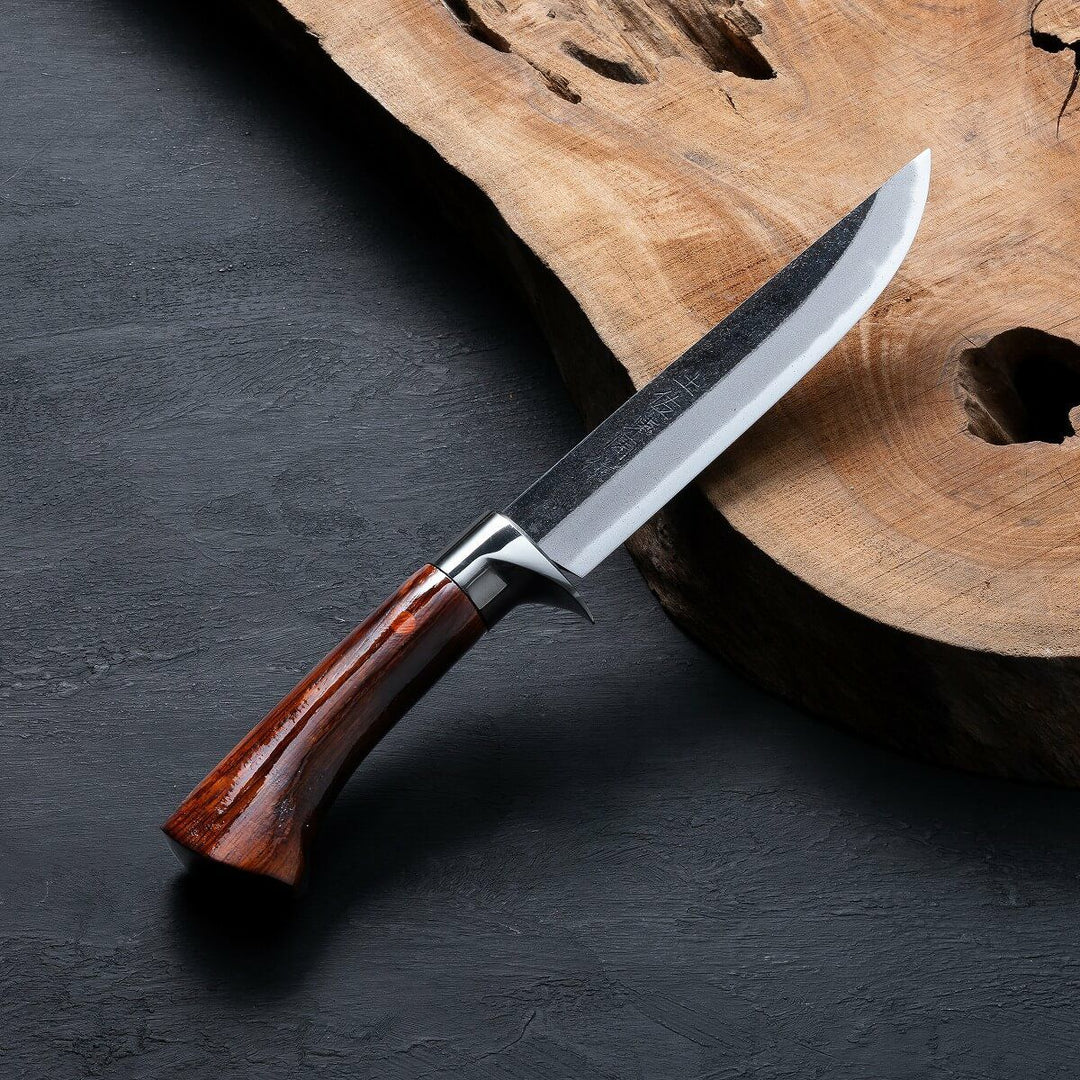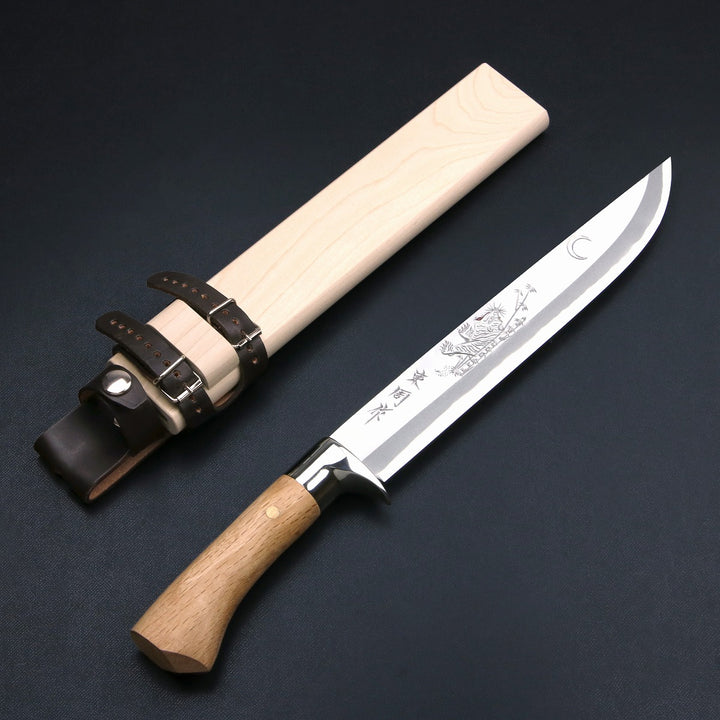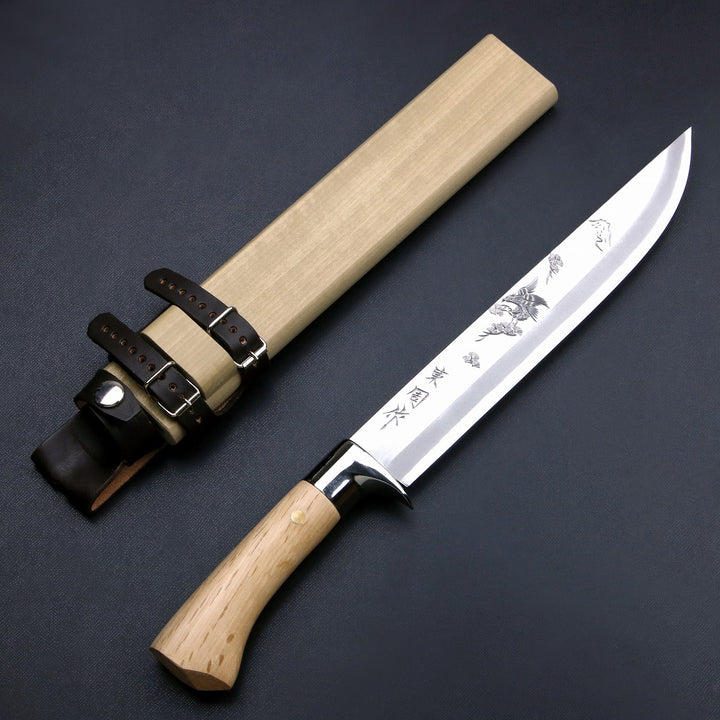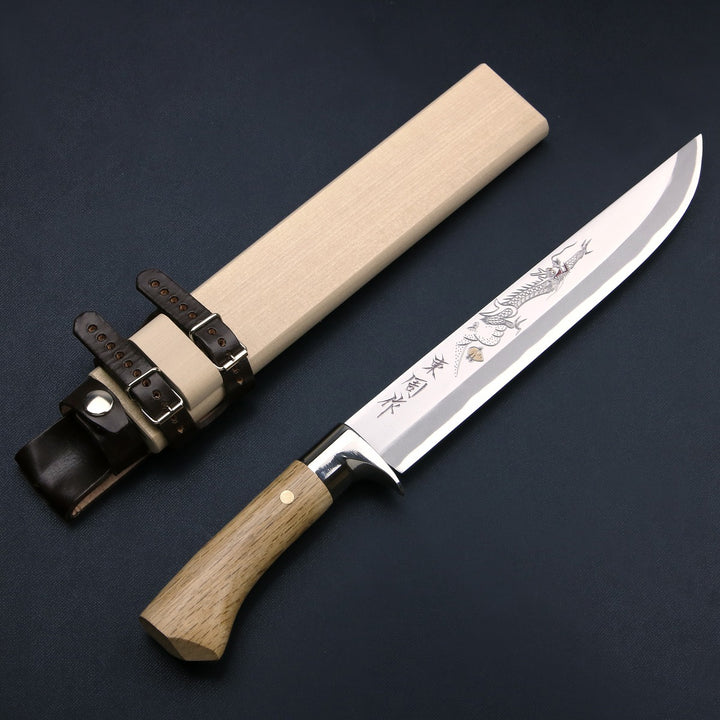JAPANESE HUNTING KNIFE
*Clicking on the product name or image will take you to the product page.
| Product Category |
Hunting and butchering | Light work | Cooking | Pruning | Chopping firewood |
Carving & Polished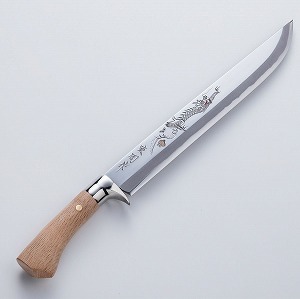 |
〇 | ◎ | - | - | - |
Tosa KUROUCHI & RANBA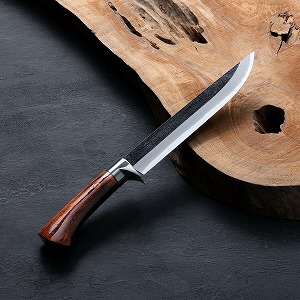 |
〇 | ◎ | △ | △ | - |
For Outdoor Camping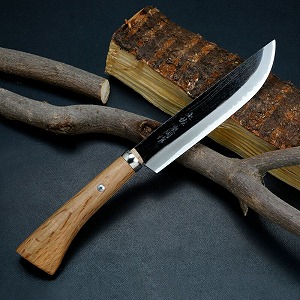 |
△ | ◎ | △ | 〇 | △ |
For Outdoor small knife |
△ | △ | ◎ | - | - |
YAMASHI Polished (single edged)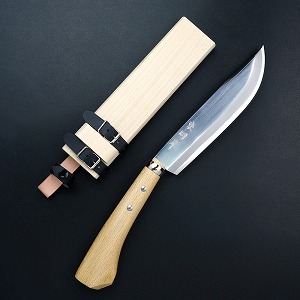 |
〇 | 〇 | - | ◎ | - |
YAMASHI Polished (double-edged)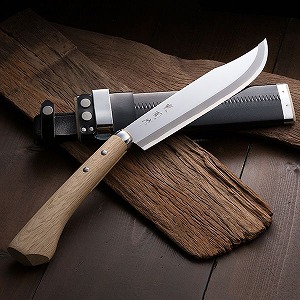 |
△ | 〇 | - | ◎ | △ |
Japanese Hatchet single bevel |
- | △ | - | ◎ | - |
Japanese Kurouchi Outdoor Hatchet |
- | - | - | 〇 | ◎ |
| Blade size (approximate) |
4 to 7 inches (120 to 210 mm) |
8 inches and up (240mm and up) |
|||
| Product Category |
Hunting and butchering | Light work | Cooking | Pruning | Chopping firewood |
| Specialized stores in Japan known for high-quality Japanese hunting knives | |||||||||
 If you're looking for a razor-sharp hunting knife, come to our store to get the highest-quality Japanese hunting knives. We offer more than 30 types of hunting knives tailored for a variety of uses, including hunting, outdoor activities, camping, mountain climbing, collecting, survival, butchering, and cooking. |
|||||||||
| The Joy of Sharpening | |||||||||
 As mentioned earlier, the unique Japanese structure makes it easy to sharpen and maintain. Since sharpness preferences vary, you can customize the blade’s sharpness to your liking by sharpening it with a whetstone. Additionally, when the blade becomes dull, you don’t have to dispose of it; you can sharpen it and continue using it for a long time. |
|||||||||
| Buying from a Japanese company with proven overseas sales ensures reliability. | |||||||||
|
10 years of experience and over 3,000 overseas shipments to 40 countries!  |
|||||||||
| Delivery Information | |||||||||
|
We primarily use Japan Post and FedEx for shipping. Shipping costs vary depending on the method of delivery and the weight of the product. We warmly welcome customers from all around the world! After placing your order, we will provide a tracking number via email, allowing you to monitor your package throughout the delivery process for peace of mind. |
|||||||||
| Customer Review | |||||||||
|
|||||||||
| Frequently Asked Questions | |||||||||
How should I maintain a Japanese hunting knife?Proper maintenance of a Japanese hunting knife ensures it remains in excellent condition for a long time. Here are the basic care steps: 1. Cleaning After Use 2. Rust Prevention 3. Regular Sharpening 4. Proper Storage 5. Additional Care |
|||||||||
What is the best steel material for a Japanese hunting knife?Blue Paper Steel (Aogami) and White Paper Steel (Shirogami) are popular choices. Blue Paper Steel is known for its hardness and sharpness, while White Paper Steel is easier to sharpen. What are the uses of a Japanese hunting knife?Japanese hunting knife can be used for hunting, food preparation, chopping firewood, and trimming branches. It is especially handy for outdoor activities. Hatchet vs. Knife: Which One Should You Choose?When it comes to survival tools, the debate between a hatchet and a knife is timeless. Each has its strengths, and the right choice depends on your specific needs. Hatchet Knife Why Not Both? Explore our selection of survival tools and find the perfect combination to meet your needs! Do you offer full-tang hunting knives?Yes, we provide full-tang hunting knives crafted in the renowned BANSHU region, celebrated for its exceptional craftsmanship. |
|||||||||
|
|||||||||

























